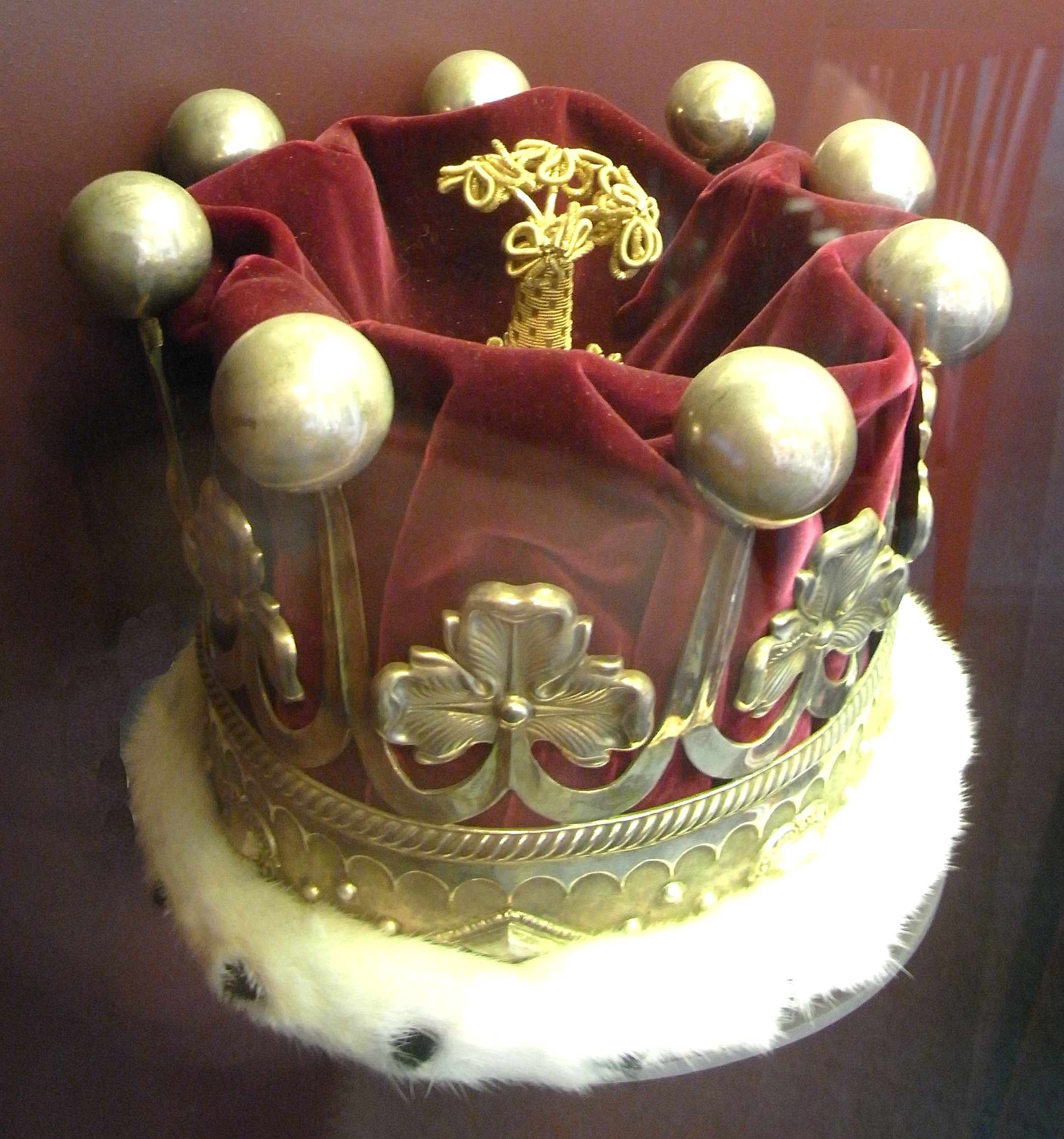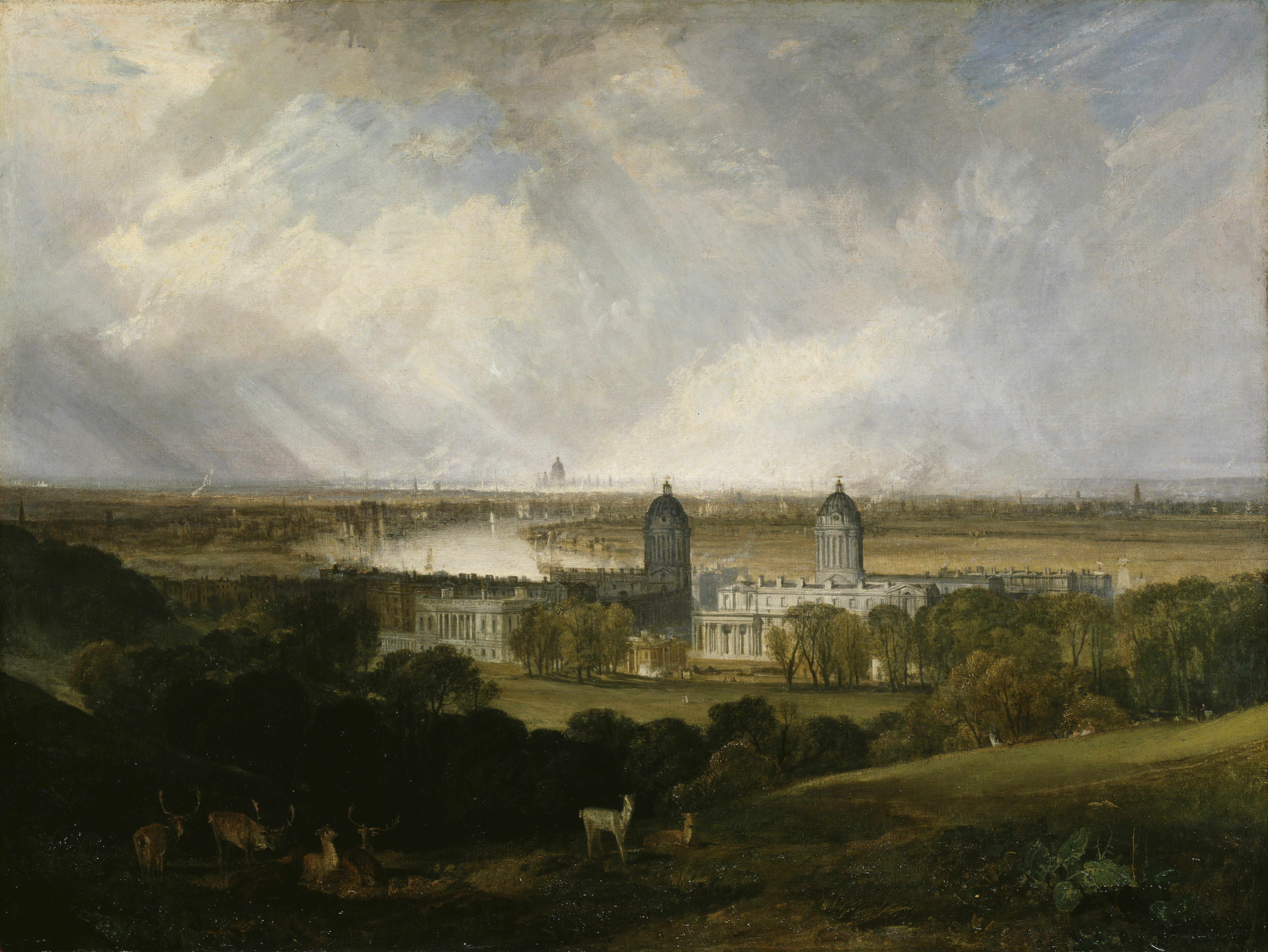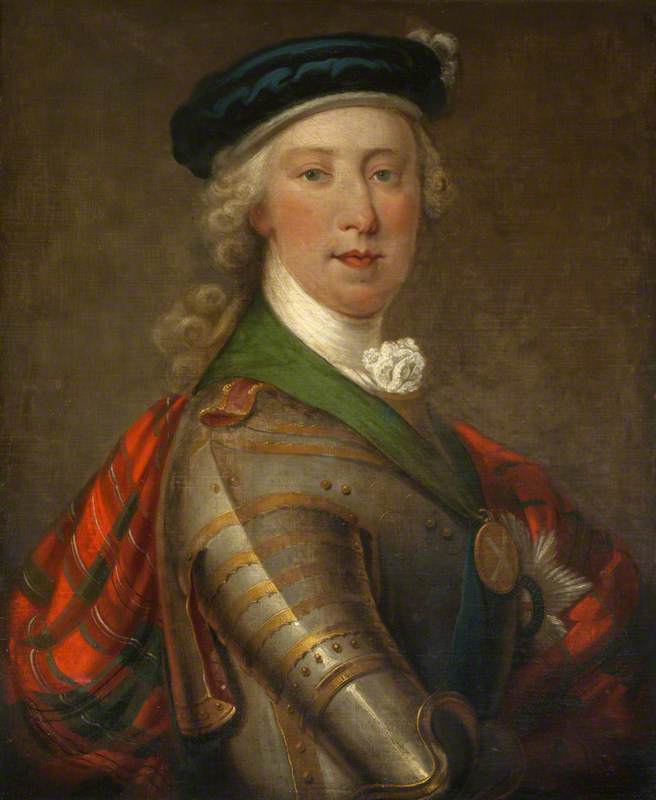|
Earl Of Derwentwater
Earl of Derwentwater (pronounced "Durwentwater") was a title in the Peerage of England. It was created in 1688 for Sir Francis Radclyffe, 3rd Baronet. He was made Baron Tyndale, of Tyndale in the County of Northumberland, and Viscount Radclyffe and Langley at the same time, also in the Peerage of England. He was succeeded by his son, the second Earl, who married Lady Mary Tudor, daughter of Charles II by his mistress Moll Davis. Their eldest son, the third Earl, was a prominent Jacobite. In 1716, he was convicted of high treason, attainted and executed on Tower Hill in London. Despite having been stripped of his titles through the attainder, his only son John, titular 4th Earl of Derwentwater, continued to use them. On John's early death in 1731, they were claimed by his uncle, Charles Radclyffe, titular 5th Earl. He was also a Jacobite but managed to escape to France after the 1715 rebellion, where he was secretary to Charles Edward Stuart ("Bonnie Prince Charlie"). However, ... [...More Info...] [...Related Items...] OR: [Wikipedia] [Google] [Baidu] |
Coronet Of A British Earl
A coronet is a small crown consisting of ornaments fixed on a metal ring. A coronet differs from other kinds of crowns in that a coronet never has arches, and from a tiara in that a coronet completely encircles the head, while a tiara does not. In other languages, this distinction is not made as usually the same word for ''crown'' is used irrespective of rank (german: Krone, nl, Kroon, sv, Krona, french: Couronne, etc.) Today, its main use is not as a headgear (indeed, many people entitled to a coronet never have a physical one created), but as a rank symbol in heraldry, adorning a coat of arms. Etymology The word stems from the Old French ''coronete'', a diminutive of ''co(u)ronne'' ('crown'), itself from the Latin ''corona'' (also 'wreath') and from the Ancient Greek ''κορώνη'' (''korōnē''; 'garland' or 'wreath'). Traditionally, such headgear is used by nobles and by princes and princesses in their coats of arms, rather than by monarchs, for whom the ... [...More Info...] [...Related Items...] OR: [Wikipedia] [Google] [Baidu] |
London
London is the capital and List of urban areas in the United Kingdom, largest city of England and the United Kingdom, with a population of just under 9 million. It stands on the River Thames in south-east England at the head of a estuary down to the North Sea, and has been a major settlement for two millennia. The City of London, its ancient core and financial centre, was founded by the Roman Empire, Romans as ''Londinium'' and retains its medieval boundaries.See also: Independent city#National capitals, Independent city § National capitals The City of Westminster, to the west of the City of London, has for centuries hosted the national Government of the United Kingdom, government and Parliament of the United Kingdom, parliament. Since the 19th century, the name "London" has also referred to the metropolis around this core, historically split between the Counties of England, counties of Middlesex, Essex, Surrey, Kent, and Hertfordshire, which largely comprises Greater London ... [...More Info...] [...Related Items...] OR: [Wikipedia] [Google] [Baidu] |
Dilston Hall
Dilston Castle is a ruined 15th-century tower house situated at Dilston, near Corbridge, Northumberland, England. It has Scheduled Ancient Monument and Grade I listed building protection. A three-storey tower was built by Sir William Claxton on the site of an earlier pele tower in the 15th century. The Radclyffe family In 1621 the castle was acquired by the Radclyffe family as a result of the marriage of Edward Radclyffe to the Dilston heiress. The Catholic Radclyffes built a private chapel adjacent to the house in 1616 ( the chapel also has Ancient Monument and Listed Building status). (Four of the Radcliffe children including Margaret Radcliffe were abroad in a convent.) In 1622 Sir Francis Radclyffe incorporated the tower house into a new manor house, which was to become known as Dilston Hall. A later Francis Radclyffe was a supporter of the Royalist cause during the Civil War and his estates including Dilston Hall were sequestrated by the Commonwealth. The property was re ... [...More Info...] [...Related Items...] OR: [Wikipedia] [Google] [Baidu] |
Lords Of The Admiralty
This is a list of Lords Commissioners of the Admiralty (incomplete before the Restoration, 1660). The Lords Commissioners of the Admiralty were the members of The Board of Admiralty, which exercised the office of Lord High Admiral when it was not vested in a single person. The commissioners were a mixture of politicians without naval experience and professional naval officers, the proportion of naval officers generally increasing over time. In 1940, the Secretary of the Admiralty, a civil servant, became a member of the Board. The Lord High Admiral, and thus the Board of Admiralty, ceased to have operational command of the Royal Navy when the three service ministries were merged into the Ministry of Defence in 1964, when the office of Lord High Admiral reverted to the Crown. 1628 to 1641 *20 September 1628: Commission. ** Richard Weston, 1st Baron Weston ( Lord High Treasurer), First Lord ** Robert Bertie, 1st Earl of Lindsey ( Lord Great Chamberlain) ** Edward Sackville, ... [...More Info...] [...Related Items...] OR: [Wikipedia] [Google] [Baidu] |
Greenwich Hospital (London)
Greenwich Hospital was a permanent home for retired sailors of the Royal Navy, which operated from 1692 to 1869. Its buildings, in Greenwich, London, were later used by the Royal Naval College, Greenwich and the University of Greenwich, and are now known as the Old Royal Naval College. The word "hospital" was used in its original sense of a place providing hospitality for those in need of it, and did not refer to medical care, although the buildings included an infirmary which, after Greenwich Hospital closed, operated as Dreadnought Seaman's Hospital until 1986. The foundation which operated the hospital still exists, for the benefit of former Royal Navy personnel and their dependants. It now provides sheltered housing on other sites. History The hospital was created as the Royal Hospital for Seamen at Greenwich on the instructions of Queen Mary II, who had been inspired by the sight of wounded sailors returning from the Battle of La Hogue in 1692. She ordered the King Charl ... [...More Info...] [...Related Items...] OR: [Wikipedia] [Google] [Baidu] |
Forfeited Estates Commission
Forfeit or forfeiture may refer to: Arts, entertainment, and media * ''Forfeit'', a 2007 thriller film starring Billy Burke * "Forfeit", a song by Chevelle from '' Wonder What's Next'' * '' Forfeit/Fortune'', a 2008 album by Crooked Fingers Law * Asset forfeiture, in law, the confiscation of assets related to a crime * Forfeiture (law), deprivation or destruction of a right in consequence of not performing an obligation or condition Sports * Forfeit (sport), a premature end of a game ** Forfeit (baseball) In rare cases, baseball games are forfeited, usually when a team is no longer able to play. Although not uncommon in baseball's early days, forfeits are now rare. There have been only five forfeits in Major League Baseball (MLB) since 1954; the l ... ** Forfeit (chess), defeat in a chess game by a player's being absent or out of time ** Declaration and forfeiture, in cricket, two possible ends of an innings See also * Forfaiting, a financial term * Walkover [...More Info...] [...Related Items...] OR: [Wikipedia] [Google] [Baidu] |
Countess Of Derwentwater
Amelia Matilda Mary Tudor Radclyffe (c.1831 - 27 February 1880) soi-disant Countess of Derwentwater, was a 19th-century claimant to the estates of the Earls of Derwentwater. She claimed to be the granddaughter of John Radclyffe, only son of the third Earl, and in 1860 commenced to agitate for her rights, initially contacting Lord Petre as the representative of descendants of the family using the name of Lady Matilda Radclyffe. Career In September 1868, Amelia took active steps to assert her claim by forcibly taking possession of the old ruined castle at Dilston. She hoisted the Radclyffe flag on the ancient tower, and suspended portraits of the family on the ruined walls of the principal hall. Conformable to instructions from the Lords of the Admiralty, she was ejected by their agent, when she took up residence in a tent on the side of the road. After other proceedings she was imprisoned for contempt of court, her claim having formally been investigated and found to be invalid. ... [...More Info...] [...Related Items...] OR: [Wikipedia] [Google] [Baidu] |
James Bartholomew Radclyffe, 4th Earl Of Newburgh
James Bartholomew Radclyffe, 4th Earl of Newburgh and titular 6th Earl of Derwentwater (23 August 1725 – 2 January 1787) was a British nobleman, Earl of Newburgh in the Peerage of Scotland and titular Earl of Derwentwater in the Peerage of England. He was born on 23 August 1725, the son of Charles Radclyffe, titular 5th Earl of Derwentwater (titular only, due to the attainder of Charles' older brother James Radclyffe, 3rd Earl of Derwentwater in 1716) and Charlotte Maria Livingston, 3rd Countess of Newburgh. During the Jacobite rising of 1745 The Jacobite rising of 1745, also known as the Forty-five Rebellion or simply the '45 ( gd, Bliadhna Theàrlaich, , ), was an attempt by Charles Edward Stuart to regain the British throne for his father, James Francis Edward Stuart. It took ..., Radclyffe was captured with his father, but soon released. His father was beheaded on 8 December 1746. On 11 November 1749, he married Barbara Kemp. They had two children: *Anthony Jame ... [...More Info...] [...Related Items...] OR: [Wikipedia] [Google] [Baidu] |
Edward Radclyffe, 2nd Earl Of Derwentwater
Edward Radclyffe, 2nd Earl of Derwentwater (1655 – 29 April 1705) was an English peer, styled Viscount Radclyffe from 1688 to 1695. He inherited the earldom from his father, Francis Radclyffe, 1st Earl of Derwentwater in 1697. His mother was Catherine Fenwick, daughter of Sir William Fenwick. On 18 August 1687, he married Lady Mary Tudor, the natural daughter of King Charles II. Their children were: *James Radclyffe, 3rd Earl of Derwentwater (1689–1716) *Hon. Francis Radclyffe (2 February 1691 – 15 May 1715) *Hon. Charles Radclyffe (1693–1746) *Lady Mary Tudor Radclyffe (6 October 1697 – 16 March 1756) The marriage was unhappy. (Thomas Seccombe Thomas Seccombe (1866–1923) was a miscellaneous English writer and, from 1891 to 1901, assistant editor of the ''Dictionary of National Biography'', in which he wrote over 700 entries. A son of physician and episcopus vagans John Thomas Se ..., writing in the ''Dictionary of National Biography'', says that Mary was ... [...More Info...] [...Related Items...] OR: [Wikipedia] [Google] [Baidu] |
Baronetage Of England
Baronets are a rank in the British aristocracy. The current Baronetage of the United Kingdom has replaced the earlier but existing Baronetages of England, Nova Scotia, Ireland, and Great Britain. Baronetage of England (1611–1705) King James I created the hereditary Order of Baronets in England on 22 May 1611, for the settlement of Ireland. He offered the dignity to 200 gentlemen of good birth, with a clear estate of £1,000 a year, on condition that each one should pay a sum equivalent to three years' pay to 30 soldiers at 8d per day per man (total – £1,095) into the King's Exchequer. The Baronetage of England comprises all baronetcies created in the Kingdom of England before the Act of Union in 1707. In that year, the Baronetage of England and the Baronetage of Nova Scotia were replaced by the Baronetage of Great Britain. The extant baronetcies are listed below in order of precedence (i.e. date). All other baronetcies, including extinct, dormant (D), unproven (U), un ... [...More Info...] [...Related Items...] OR: [Wikipedia] [Google] [Baidu] |
Earl Of Newburgh
The title Earl of Newburgh (pronounced "''New''-bruh") was created in the Peerage of Scotland in 1660 for James Livingston, 1st Viscount of Newburgh, along with the subsidiary titles Viscount of Kynnaird and Lord Levingston. The viscountcy of Newburgh and Livingston baronetcy, which devolved upon the 1st Earl, were created with remainder to heirs male and became extinct on the death of the 2nd Earl (2nd Viscount and 3rd Baronet). However, the Earldom and its subsidiary titles, which were created with remainder to heirs whomsoever, can be inherited through male and female lines, thus passing by marriage through various different families. The 3rd Countess's second husband was the titular 5th Earl of Derwentwater (a younger brother of the attainted 3rd Earl), and so the 4th and 5th Earls of Newburgh were also titular Earls of Derwentwater, Viscounts Radclyffe and Langley and Barons Tyndale, ''of Tyndale, Northumberland'', in the Jacobite Peerage. On the death of the 5th ... [...More Info...] [...Related Items...] OR: [Wikipedia] [Google] [Baidu] |
Charles Edward Stuart
Charles Edward Louis John Sylvester Maria Casimir Stuart (20 December 1720 – 30 January 1788) was the elder son of James Francis Edward Stuart, grandson of James II and VII, and the Stuart claimant to the thrones of England, Scotland and Ireland from 1766 as Charles III. During his lifetime, he was also known as "the Young Pretender" and "the Young Chevalier"; in popular memory, he is known as Bonnie Prince Charlie. Born in Rome to the exiled Stuart court, he spent much of his early and later life in Italy. In 1744, he travelled to France to take part in a planned invasion to restore the Stuart monarchy under his father. When the French fleet was partly wrecked by storms, Charles resolved to proceed to Scotland following discussion with leading Jacobites. This resulted in Charles landing by ship on the west coast of Scotland, leading to the Jacobite rising of 1745. The Jacobite forces under Charles initially achieved several victories in the field, including the Battle ... [...More Info...] [...Related Items...] OR: [Wikipedia] [Google] [Baidu] |





